Famous Huguenots
Pierre Allix (1641-1717)
Pierre Allix was a renowned theological writer, an advocate of religious toleration and the most celebrated Huguenot preacher of the 1680s in England. He was born at Alencon and came to England in 1685.
Allix studied at the Huguenot Academy at Saumur and then became minister of the church at Charenton, near Paris. He fled to England in 1685, took Anglican orders and was licenced by James II to set up a church in Jewin Street without Aldersgate using the Anglican ritual in French language. He dedicated one of his books to King James, in gratitude for the treatment he and his fellow refugees had received.
Louis XIV was troubled by his flight, and in 1686 he dispatched a special envoy offering Allix a pension of 4,000 livres if he would convert to Catholicism and return to France, which he of course refused.
Allix was a gifted linguist, distinguished in the study of Hebrew and Syriac, fluent in English and also spoke Latin. In 1686 the diarist John Evelyn writes, " I waited on the Archbishop at Lambeth, where I dined, and met the famous preacher and writer, Monsieur Allix, doubtless a most excellent and learned person ; the Archbishop and he spoke Latin together, and that very readily."
Allix was the author of many theological books and was created Doctor of Divinity by Emmanuel College, Cambridge, later became canon and treasurer to the Cathedral of Salisbury.
Allix made a very important discovery, that the ‘Codex Ephraemi Syri’ was a palimpsest. The Codex was a fifth-century Greek manuscript of the Bible written on parchment. The original script was removed by washing and the parchment was re-used and overwritten in the twelfth century. Allix was the first person to notice that the original writing which was just visible was Biblical, and many years later when advanced technology became available it was deciphered and translated.
Sources:
Peter ALLIX (1641-1717). Brief Life and Works:. Martyn Thompson
Studies on the Text of the New Testament and Early Christianity: edited by Daniel Gurtner, Juan Hernández, Jr., Paul Foster
The Huguenots: History and Memory in Transnational Context: edited by David J.B. Trim
Protestant exiles from France, chiefly in the reign of Louis XIV; or, The Huguenot refugees and their descendants in Great Britain and Ireland"
John Locke, Toleration and Early Enlightenment Culture: John Marshall
Isaac Basire 1704-1768
Isaac Basire was known for his work as a map engraver and was the first in a family of four generations of well-known engravers. His family came originally from Rouen in Normandy.
Basire was born in Wardour Street, Soho, the son of Jacques Basire from Rouen. He was apprenticed to a silversmith and then to a metal engraver/letterpress printer. He lived and worked in a house in St John’s Lane, Clerkenwell from about 1739, working mainly on maps and book illustrations. His sons John and Isaac carried on the business there after his death.
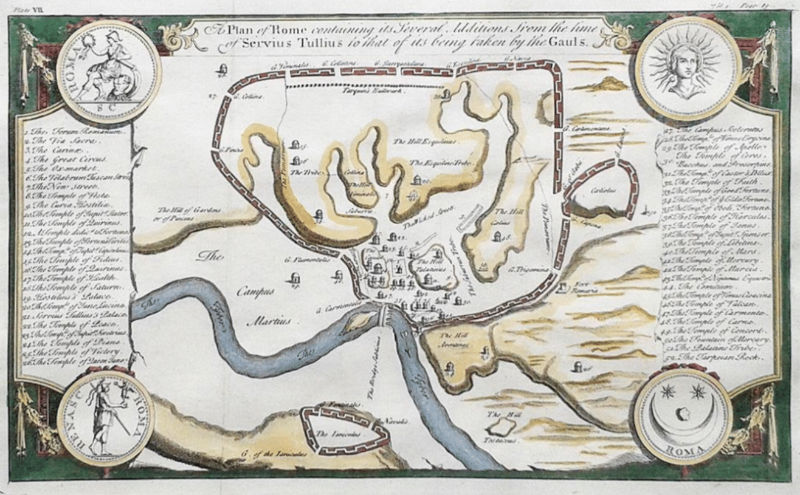
His son James Basire 1 (1730- 1802) became known as an engraver of architecture and was Engraver to the Royal Society and the Society of Antiquaries, his grandson James Basire 2 (1769 - 1822) also became Engraver to the Royal Society and to the Antiquaries, and his great-grandson James Basire 3 (1796-1869) was also a line engraver.
Sources:
The Quiet Conquest: The Huguenots 1685-1985 by Tessa Murdoch
www.britishmuseum.org/research/search_the_collection_database/term_details.aspx?bioId=133182
https://www.british-history.ac.uk/survey-london/vol46/pp142-163
Christopher Baudouin (1662-1724)
Christopher Baudouin was a renowned silk pattern designer. He used flowers, leaves and natural forms, beloved by the Huguenots, in his designs. James Leman, the silk designer and Master Weaver who was his protégé, wove Christopher's patterns into silk for Matthew Vernon, a Silk Mercer by Royal Appointment. Anna Maria Garthwaite, one of the most famous textile designers of the period, collected some of his designs. The V&A has a collection of some of his hand drawn patterns.
Christopher Baudouin was born in Tours in 1662, where he was baptised in the Protestant Temple. Since King Louis XI set up the silk industry there in 1466, Tours was one of the most important silk weaving areas in France. Over half the population of the town was involved in silk manufacture. Christopher's uncle and godfather, Claude Baudouin, was a Master Silk Weaver in the town. The Huguenots who left Tours and settled in Spitalfields brought their skills to an already established silk industry.
The first record of Christopher Baudouin in England is of his marriage in 1683 when he married Françoise Prevost, at St James' Church, Duke's Place, Aldgate, in the City of London, which was notorious for clandestine marriages, without licence or banns. The young couple were reprimanded for this which is noted in the records of the French Huguenot church in Threadneedle Street. Christopher and Françoise had seven children, five of whom survived infancy. On the baptism record of his son, Gabriel Salomon, in 1700, Christopher's occupation is given as “pattern drawer".
Christopher Baudouin was granted denization in 1699/1700. The act of denization granted certain rights to immigrants residing in England. In 1709, Christopher, Françoise and their two daughters, Françoise and Margueritte, became naturalized subjects. In 1714 he signed a petition from “the gentlemen and principal inhabitants of the Hamlet of Spitalfields”, where he lived in Paternoster Row. This was for creating a new parish of Spitalfields, separate from Stepney, with a new church, Christ Church, designed by Nicholas Hawksmoor.
He died in 1724, aged 62, and was buried at St Dunstan’s, Stepney on 14 September.
Sources:
The Early Silk Weavers of London and Spitalfields (1520-1720) by Richard Edmunds
Huguenot Heritage by Robin Gwynn
Spitalfields by Dan Cruickshank

Samuel Beckett (1906-1989)
Samuel Beckett was a poet, critic, novelist and playwright, born in Dublin in Ireland. He lived mainly in Paris and wrote both in French and English. His plays explore the human condition in the tragi-comic tradition of The Theatre of the Absurd.
Samuel Beckett’s father William Frank Beckett was of Huguenot descent. Living in Paris at the time, Beckett fought in the resistance movement during World War ll and was awarded the Croix de Guerre.
In 1969 he was awarded the Nobel Prize for Literature; he decided not to accept the award in person as he wished to avoid making a speech. The play Waiting for Godot is widely considered to be his most important work.
Source https://www.biography.com/people/samuel-beckett https://www.britannica.com/biography/Samuel-Beckett

Jessie Boucherett (1825-1905)
Jessie Boucherett campaigned for equal rights and dedicated much of her life to the emancipation of women. She was the author of a book called Hints for Self-Help: a Book for Young Women, published in 1863.
She was born near Market Rasen, the daughter of Ayscoghe Boucherett, who had been High Sheriff of Lincolnshire in 1820.
Boucherett attended a school run by the Byerley sisters in Stratford upon Avon where Elizabeth Gaskell had once been a pupil. After meeting Bessie Rayner Parkes and Barbara Bodichon, fellow campaigners, they set up a charitable organisation SPEW, Society for Promoting the Employment of Women in 1858. In 1926 the name changed to the Society for Promoting the Training of Women or SPTW. In 2014 it again changed to Futures for Women or FfW. SPEW allowed young women to became apprentices in jobs such as watch making, hairdressing and photography as well training in careers in accountancy and book-keeping. Today Futures for Women continues helping women improve their career prospects through training and education.
http://spartacus-educational.com/Wboucherett.htm
https://www.geni.com/projects/Huguenots-of-Britain
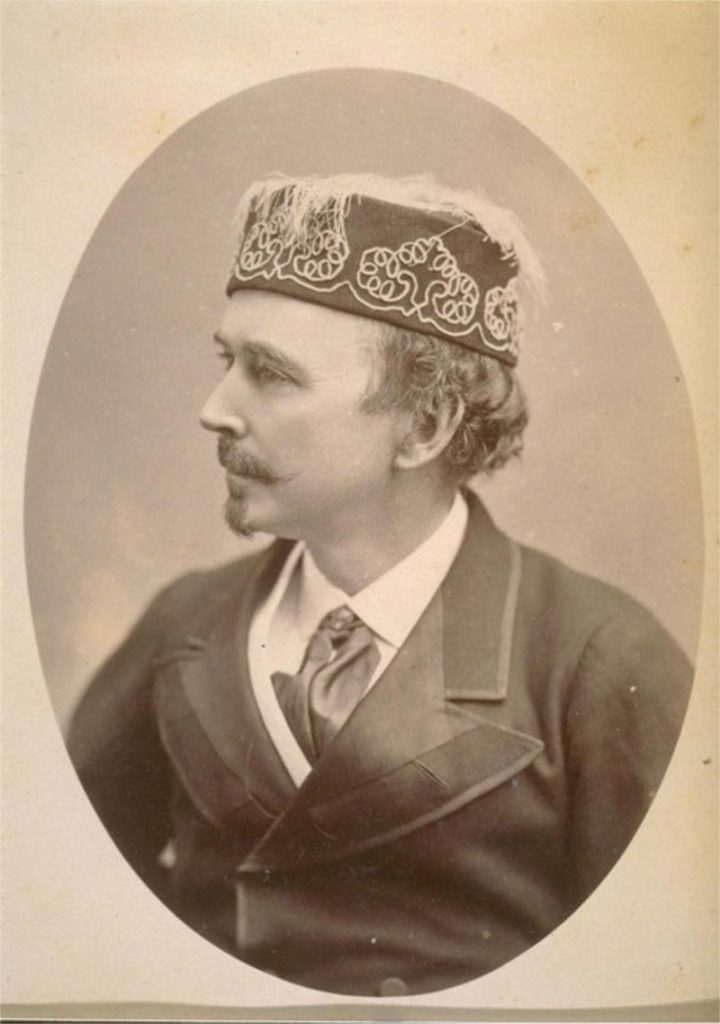
Dion Boucicault (1820-1890) was an Irish playwright who wrote over 200 plays including The Shaughraun and London Assurance; his plays are considered to be the forerunners of modern social drama.
He was born Dionysius Lardner Boursiquot, in Dublin in 1820, the son of Anna Darley and a wine merchant Samuel Boursiquot who came from a Huguenot family. However, there is a theory that in reality Boucicault was Anna's son by Dr Dionysius Lardner, the Irish science writer and lecturer.
Boucicault was famed for his skill in characterisation and timing as an actor, for being an inventive director and innovative theatre manager. He was instrumental in getting the first dramatic copyright law passed in 1856. He helped to establish the royalty system for playwrights. Boucicault died in New York in America in 1890.
Source http://www.Victorianweb.org https://www.britannica.com/place/New-York-Cityhttps://www.kent.ac.uk/library/specialcollections/theatre/boucicault/biography.html
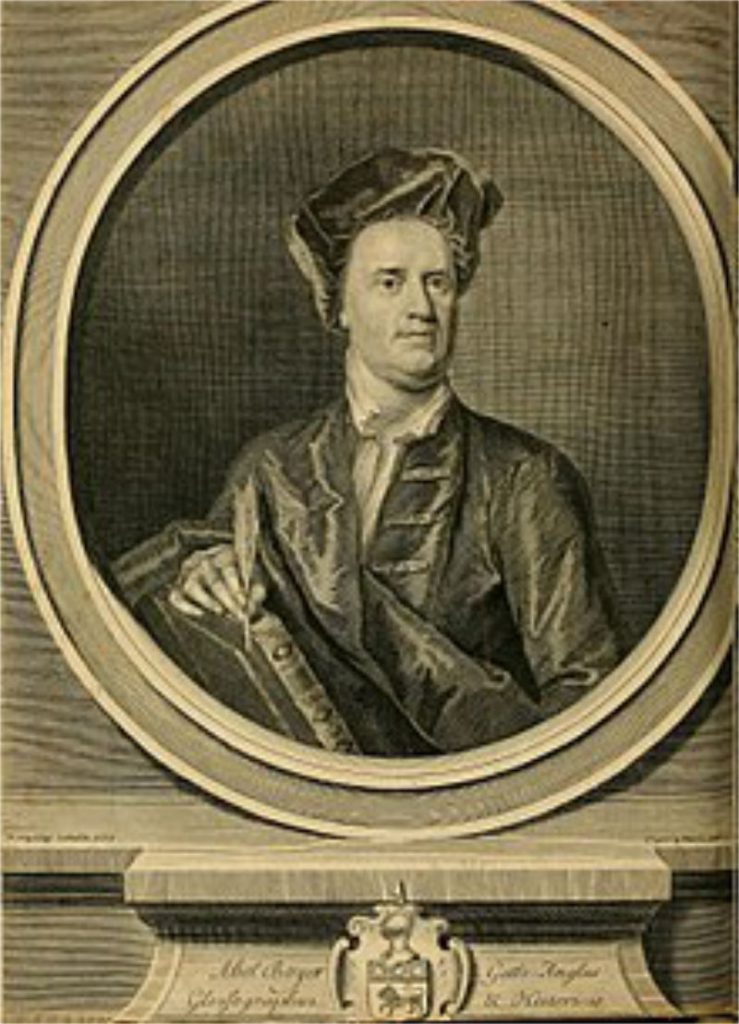
Abel Boyer c.1667-1729 was a journalist, historical and political writer, lexicographer, and theatrical producer. He was born at Castres, in Upper Languedoc, southern France and came to England in 1689.
He wrote numerous books including histories of the reign of Queen Anne and of William III. He also French-English dictionaries and. one of the best English-French dictionaries of its time. He also wrote a newspaper called ‘The Post-boy’ Boyer’s writing shows a special interest in Parliament. He published The Political State of Great Britain, a monthly journal giving, for the first time, regular details of the debates in the Houses of Parliament. He was a zealous Whig and supporter of the Hanoverian succession.
Source:
https://www.bl.uk/collection-items/
Theatrical Records: Or, An Account of English Dramatic Authors, and Their Works - Robert Dodsley
Nicholas Briot (1579-1646) was a celebrated coin engraver and medal maker.
He was born in Damblain, Lorraine, France in about 1579. He came from a Huguenot family who were involved in coin production. His father, Didier, uncle, François and brother, Isaac were all coin engravers in France. His first wife, Pauline Nisse, died in 1608. They had one son, Philippe. In 1611 Nicholas married his second wife Esther Petau. They had two children: Jacques, born in 1612 and Esther, born in 1614.
From 1605-1625 Nicholas was the Engraver General of the coins of France and he was also the Chief engraver of the Paris Mint from 1606-1625. In 1610 he created medals to commemorate the coronation of the 9 year old French king, Louis XIII.
From 1616-1625 Nicholas tried to introduce a mechanical method of coin making to France, which he had learned in Germany. This was not popular with the coin makers, as they resisted all use of machinery and continued making coins by hand, striking them with a hammer, which produced less perfect looking coins. Eventually, unable to convince them to adopt his methods and to flee his creditors, Nicholas left France to live in England in 1625.
In England Nicholas joined the court of King Charles I. He worked at the Royal Mint at the Tower of London, where he lived. Coin making was kept separate from the other activities at the Tower, and the staff lived and worked together. The Mint was a dangerous place, with fumes from the deadly chemicals and the poisonous gases from the large furnaces used to melt down the precious metals. Before the screw-operated coin press was introduced by Nicholas Briot, making coins by hand was a very precise operation and many accidents occurred when the coin makers lost a finger. After mechanisation coin making became much safer.
In 1626 Nicholas created a gold Medal for the coronation of Charles I on 2 February. On 16 Dec 1628 Nicholas Briot was granted full denizen by Charles I. The act of denization granted certain rights to immigrants residing in England. In 1633 he was appointed Chief Engraver to the Royal Mint in London.
From 1635 he became Mint Master of the Scottish Mint in Edinburgh and stayed in Scotland. His daughter, Esther, married Sir John Falconer, who held joint office with her father as Master of the Mint in Scotland in 1637/8.
With the outbreak of the Civil War in August 1642, King Charles I and his court moved from London to the safety of York, and then after 6 months moved to Oxford. Nicholas Briot went with the king, setting up a travelling mint, taking his tools so he could carry on minting coins. “Briot was recalled to England by the King; and at the time of the Rebellion he took possession of the punches, roller instruments, and coining apparatus at the tower by order of His Majesty, and had them removed, trussed up in saddles, at the hazard of his life, for the purpose of continuing the coining operations in the cause of the King.“ (Samuel Smiles)
Nicholas remained in the service of the King as his Engraver until the time of his death in December 1646. There is a record of his burial at St Martin-in-the-Fields on 25 December 1646. At the Restoration of Charles II in 1660, many years after Nicholas’s death, his widow, Esther, recovered the sum of £3,000 in arrears, which had been due to her husband.
Sources
Dictionary of National Biography volumes 1-22 for Nicholas Briot
The Huguenots: Their Settlements, Churches & Industries by Samuel Smiles (1881)
artlorrain.com/famille-briot
https://www.hrp.org.uk/tower-of-london
www.britishmuseum.org
Jean Carré c.1520-1572 is credited with revitalising the English glassmaking industry. He came originally from Lorraine and fled to England in 1567.
Carré learned his trade in Antwerp, Belgium. In 1567, he was issued a 21-year monopoly from Queen Elizabeth to make "glass for glazing such as is made in France, Burgundy, and Lorraine." on the proviso that they trained Englishmen in this skill. The English glass industry was less well developed than that of the Continent and was unable to keep up with the growing demand for good quality glass. There was an existing glass industry in the Weald of Surrey which originated in the 13th century and this was where Carré established his works.Carré built two glass furnaces in Fernfold, on the Sussex-Surrey border, and one in Sidney Wood near Alfold in Surrey.
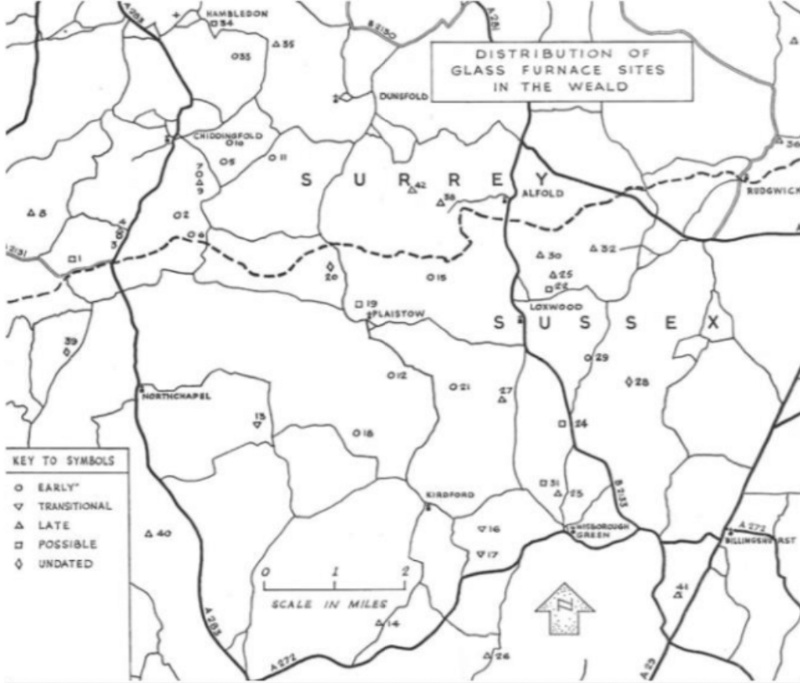
Another furnace was built in London and focussed on Venetian-influenced glassware. Carré brought to England glassmakers from Italy and the French regions of Burgundy and Lorraine, where the skill was well established. He introduced improved techniques which had a lasting effect and improvement on Wealden glass, and his enterprise was carried on by the French refugee glassmakers he introduced.
Sources:
https://www.surreycc.gov.uk/culture-and-leisure/history-centre/jean-carre-and-wealden-glass
https://www.encyclopedia.com/science/encyclopedias-almanacs-transcripts-and-maps/jean-carre
John Castaing (birth and death dates unknown)
John Castaing was a broker and founder of the newspaper ‘Course of the Exchange’
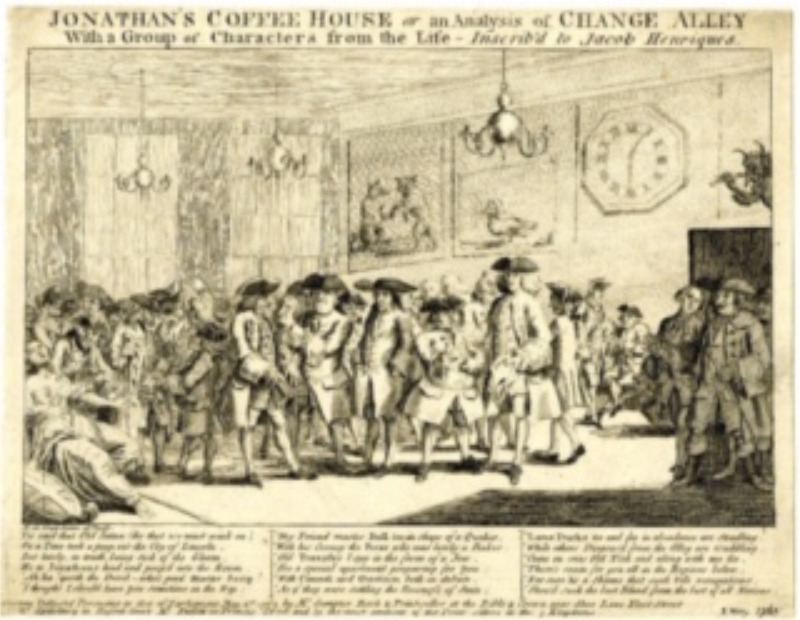
Castaign arrived from France in the 1680s and by the 1690s was a rising broker in the City Exchange. He spent a lot of time at the famous Jonathan’s Coffee House in Change Alley, which was the main meeting place of City stockbrokers, and began listing the prices of stocks and commodities on the walls of the Coffee House.
There was a rapidly developing market for all kinds of business and Government securities, and he took advantage of this by establishing in 1697 a twice weekly newspaper ‘Course of the Exchange’ a list of European cities and the price for which bills of exchange on those cities sold on the Royal Exchange. There was also information on prices and conditions of sale of numerous forms of investments; shares, bonds, annuities and securities.
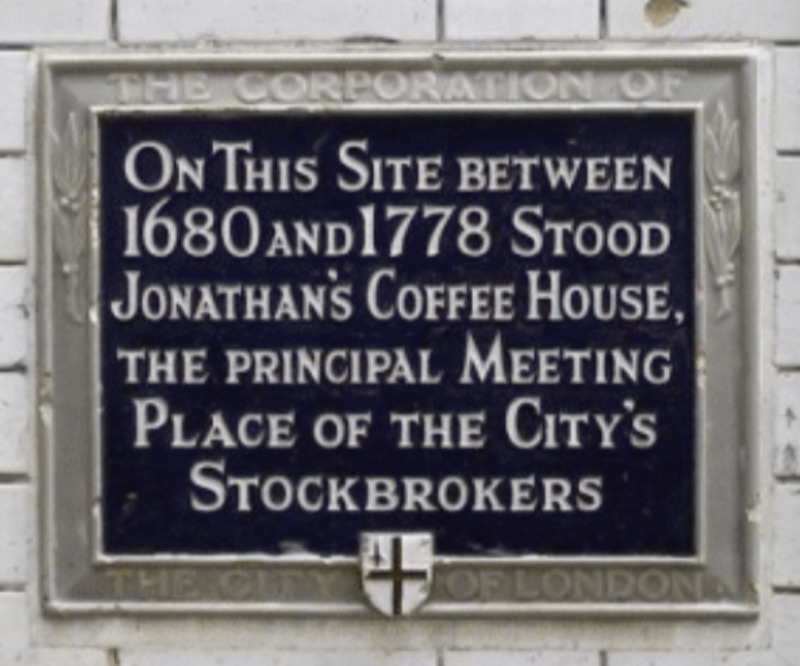
Castaing’s prices were relied upon by many of the coffee houses in the City and his exchange rate was commonly used. This paper is now known as The Stock Exchange Daily Official List, and is the third oldest continuously published newspaper in the world.
Sources:
The Quiet Conquest: The Huguenots 1685-1985 by Tessa Murdoch
Essays in the Economic History of the Atlantic World: John McCusker
Philip Cazenove (1798 – 1880) was the founder of Cazenove & Co
The Cazenove family were Huguenot financiers who fled from France to Geneva in the late 17th century and later came to London. Philip Cazenove was educated at Charterhouse and in 1819 he joined the business of his brother-in-law John Francis Menet.
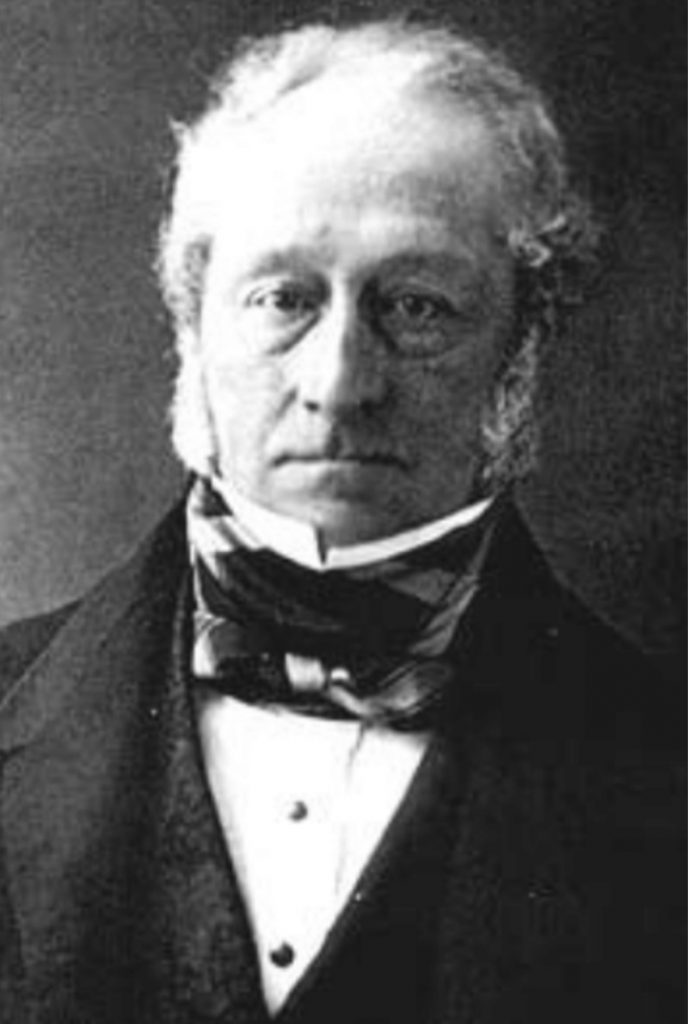
In 1854 Cazenove formed a new partnership with his son and nephew. The partnership quickly rose to prominence partly because of its involvement in the financial side of the rail industry. Part of his success was also attributed to his relationship with the Rothschild banking family, which became a financial partner in some of his transactions. The company acted as broker for the formation of the Bank of Hindustan, helped raise funding for the Atlantic Telegraph Company and the Great Eastern Railway Company and was involved in the creation of the Metropolitan District Railway Company, which built the London Underground.
In later life he devoted himself to charitable works in the fields of church, education and medicine. His obituary described him as a businessman of great capacity and a philanthropist of large sympathies.
The company became one of the leading stockbroking partnerships in London and gained a reputation as a preeminent investment banker, reputedly the appointed stockbroker to Her Majesty The Queen. The last Cazenove to work for the company was Bernard Cazenove who retired in 2004 and was Philip Cazenove's great-great-great-grandson.
Sources:
The Quiet Conquest: The Huguenots 1685-1985: Tessa Murdoch
www.encyclopedia.com/books/politics-and-business-magazines/cazenove-group-plc
www.independent.co.uk/news/business/news/huguenot-exiles-who-founded-swashbuckling-city-icon-18961.html
www.economist.com/finance-and-economics/2004/11/11/last-of-the-line
The Chamberlen family (1569-1792) migrated to England in the mid-16th century to escape the religious persecution in Catholic France. Many of the family were surgeons, physicians, accoucheurs (midwives) and apothecaries and through marriage were closely related to the De Laune family, who were similar Huguenot refugees.
Peter Chamberlen was born in 1572 in Paris, son of William Chamberlen and Genevieve Vingnon. Once in England and at the age of 25 he married Sarah de Laune, herself the daughter of a family who counted clergymen, physicians and apothecaries among their number. They went on to have ten children - Anne Chamberlen, Peter Chamberlen and 8 others. Son Peter was born on the 8 May 1601 in the Parish of St. Anne, Blackfriars, London and was brought up surrounded by medical practice and religious study. It was not surprising that after completing his early schooling at Merchant Taylor’s School, Chamberlen proceeded to Emmanuel College Cambridge, a well-known Puritan institution, followed by medical training at two of Europe’s most renowned universities, Heidelberg and Padua, and was then incorporated at Oxford and Cambridge. Thus, at 18 years-of-age, Peter Chamberlen was prepared for the commencement of his medical career. He is credited with the invention of the obstetric forceps. These were kept as a lucrative secret, as was the custom of the time and he became known as the ‘woman’s doctor’.
He married Jane Middleton, his first wife, who was the eldest daughter of Sir Hugh Middleton a prominent citizen and royal goldsmith who had King James I as a partner in a business venture. Chamberlen’s plan was to utilise every opportunity, including the minting of coins for personal advantage but also to assist the poor. Peter and Jane Chamberlen were well placed in London society and their privileged upbringing had a profound impact on his success and that of his immediate family. His career developed rapidly and he was eventually elected as a fellow of the College of Physicians in 1628. Although Peter Chamberlen held a prominent position at Court as a physician, his work was often among the poor where he was able to observe their plight.
He was much in demand by the aristocracy because of his success with difficult midwifery cases. In 1634 he attempted to form an association of midwives in the City of London. He claimed that it was his purpose to slow the infant mortality rate by educating the midwives, but the midwives themselves considered it an attempt to control their activities for his own financial advantage, and enlisted the help of the College of Physicians to stop his training programme. He was again in conflict with the College of Physicians in 1648 over a plan to introduce public baths to foster health and stem disease throughout the Kingdom.
Aged 47 he allied himself with the Anabaptists and was baptised as an adult, appreciating their attempts to address the social problems of the time. He became involved with the radical ‘Fifth Monarchy’ movement, making his religious inclinations and political leanings apparent. His reputation as a political agitator can be clearly seen in his alliance with James Harrington, a political theorist who promoted a republican system of government during the interregnum. During this period between Kings, Peter Chamberlen was a leader of an Anabaptist church.
Soon after his uncle (known as Peter Chamberlen the Elder) died in 1631 he was appointed as Physician Extraordinary to the King (a position with no paid salary). He was the physician midwife at the birth of Charles II.
Although many people branded him as crazy because of his many tracts on religious and political themes, the authorities considered him a dedicated and skilled interventionist in childbirth.
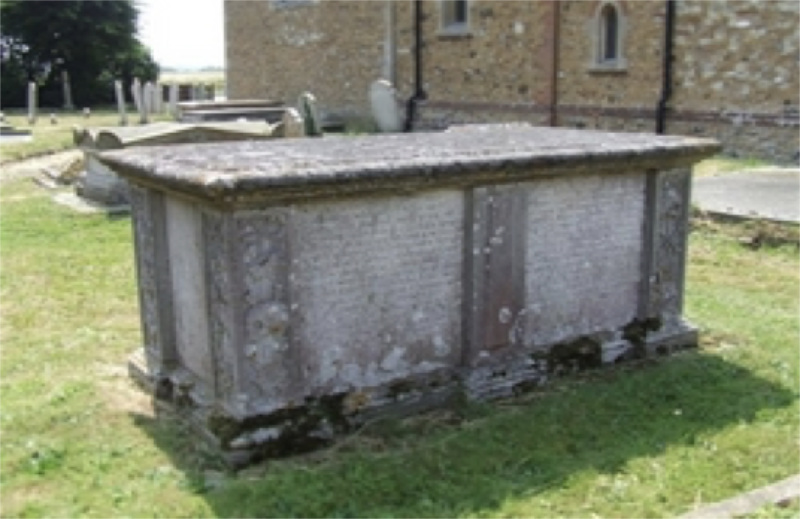
Peter Chamberlen and his wife produced three surviving sons. Hugh, the eldest, Paul the second born and John the fourth son. Of the three, Hugh Chamberlen, born c.1630 was undoubtedly the most celebrated in history. His career was colourful. It is not known where he completed his medical training although it is very likely it was in France. Hugh inherited many of his father’s entrepreneurial skills and became a renowned physician and accoucheur and, like his father, took an active interest in politics and social issues, succeeding his father as Court Physician.
Dr Peter Chamberlen was genuine in his attempts to stem infant mortality, but because of his uncompromising approach and foreign heritage he failed to gather the necessary support from among his peers. However, he assisted the development of obstetrics in England by agitating for reform and providing printed materials to be used by midwives. He died aged 81-82 in his house – the Hall at Woodham Mortimer, Essex and is buried in the nearby St Margaret’s Churchyard where there is a rather interesting inscribed tomb.
In 1843 four pairs of forceps were discovered hidden beneath a trapdoor in an attic room of the Hall. It is likely these had been secreted there by Peter's widow.Peter's tomb was restored by the Royal College of Surgeons and the forceps are now in the museum of The Royal College of Obstetricians and Gynaecologists. The tomb is ornate but gruesomely decorated and on one side are details of his life and on the other are verses which he composed especially for this purpose. It stands between the church and the gate leading to his former home. Peter's surviving son, (by his second wife) Hope Chamberlen inherited the Hall, but sold it.
References:
The minutes of the Lothbury Square Church
The records of the Royal College of Physicians.
A thesis by Desmond Potts of the University of Newcastle, Australia
The Journal of Medical Biography
Google searches
Sir John Chardin (1643-1713)
Sir John Chardin was a French-born jeweller and traveller to the Middle East and India, who later fled to England to avoid Huguenot persecution and became court jeweller to King Charles II. He is best known for his scholarly account of his travels in Persia (present day Iran).
Jean-Baptiste Chardin was born in Paris in 1643, the son of a wealthy Protestant merchant and jeweller. After receiving an excellent education he was apprenticed into his father’s business. As European jewellery was highly prized in India, Jean’s father decided to seek business opportunities there and in 1664 sent his son, together with a merchant from Lyon, overland to the East Indies. By 1666 they reached Persia.
In Persia Jean won the confidence of the Shah, Abbas II, who appointed him as a royal merchant and also commissioned some jewellery of his own design. Jean continued on to India but within a year he came back to Persia, later returning to Paris in 1670.
Having made the jewellery commissioned by the Shah (even though he probably knew that the Shah had by then died), his passion for Persia soon called him back and he set out in 1671. His journey was harrowing and most of his goods were stolen en route but he eventually arrived in mid 1673. He remained in Persia for four years, amassing a considerable fortune, finally returning to Europe by sea in 1677.
Back in France, Jean set about writing a major account of his travels in Persia and the East Indies. He continued his business interests, which included a visit to London, until 1681 when growing anti-Huguenot persecution persuaded him to move to England permanently.
Changing his name to John Chardin, his jewellery business flourished in England, and having been well received at court, he was appointed court jeweller. He was knighted by King Charles II in late 1681, on the same day that he married Esther, the daughter of another Protestant refugee in London. In 1682 he was elected as a fellow of the Royal Society.
After two years spent in Holland as King Charles’ agent to the East India Company, he retired back to England where he pursued his oriental studies and preparing his travel account for publication in 1686. He died at Chiswick in London at the end of 1713. A monument to him was placed in Westminster Abbey and a portrait of Sir John by an unknown artist hangs in the National Gallery, showing him pointing to Persia on a map of the Middle East.
Sources: Britannica, Encyclopaedia Iranica, Westminster Abbey, National Portrait Gallery
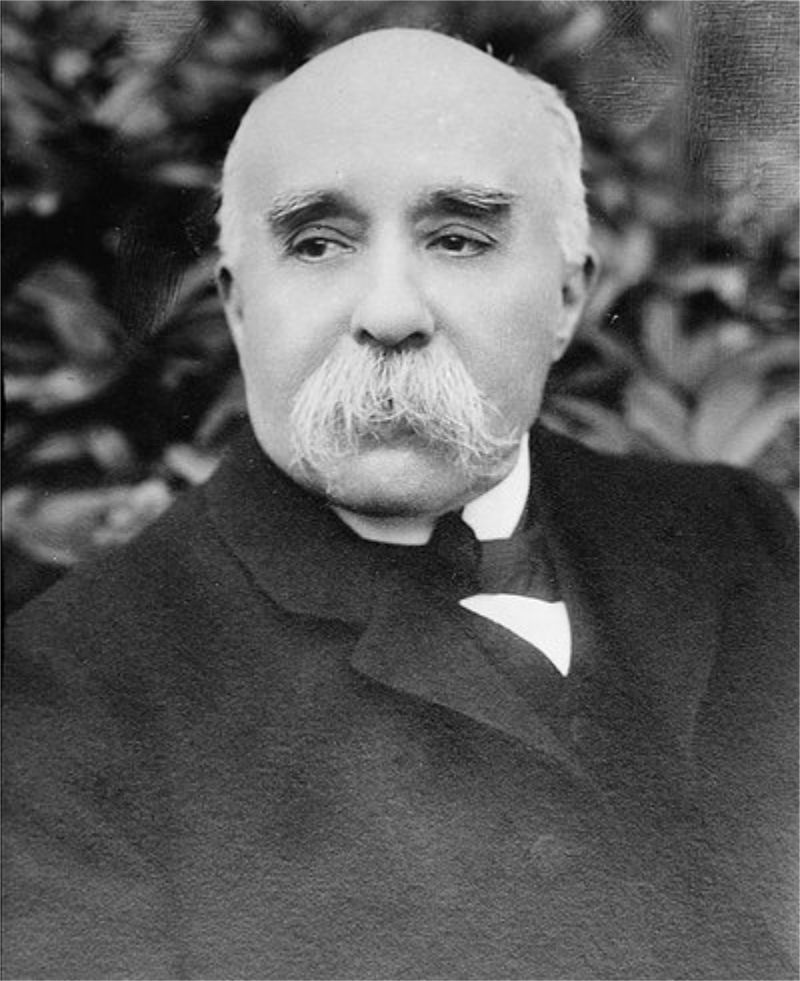
Georges Clemenceau (1841-1929)
The statesman and journalist Georges Clemenceau was Prime Minister of France from 1906-1909 and again from the end of World War 1 from 1917-1920.
He was nicknamed Le Tigre or The Tiger for his skill in debating and tenacious journalism.
Clemenceau was an important contributor to the French Third Republic. He was a major contributor to the Allied victory in World War I and was integral to the implementation of the Treaty of Versailles to establish peace after the end of World 1.
Clemenceau’s mother, Sophie Eucharie Gautreau was of Huguenot descent.
Samuel Courtauld (1876- 1947) was an English industrialist and art collector who founded the Courtauld Institute of Art in 1932.
His ancestors were Huguenot refugee silk weavers who left France in the late sixteenth century. They settled in Essex and continued their silk weaving trade. The family business grew over time and eventually became a major local and international company in the early twentieth century.
Although the family appeared to have no interest in art or art collecting, Courtauld’s interest developed late in his life. He had a passion for modern art, such as the works of Gaugin, and bequeathed his wonderful collection to the Courtauld Institute upon his death in 1947.
Source: http://www.artandarchitecture.org.uk/stories/cumming_gauguin/cumming_gauguin03.html

Joan Crawford (c. 1904-1977) was an American film and television actress. In 1999, she was ranked on the American Film Institute’s list of the greatest actresses of Classic Hollywood Cinema.
Born Lucille Fay LeSueur, she was the third child of Thomas LeSueur and Anna Bell Johnson, who was of French Huguenot descent. She began her career as a dancer, and in 1925 she started her onscreen career with MGM.
The actress gained recognition in 1928, with the smash hit Our Dancing Daughters, and a prolific and enduring career followed. After a lull in her career, Crawford left MGM and signed with Warner Brothers in the early 1940s. In 1945, Crawford won the Academy Award for Best Actress for her role as Mildred Pierce in the film of the same name.
Source: http://www.joancrawfordbest.com/f.htm & http://www.biography.com/people/joan-crawford-9260899#oscar-for-mildred-pierce
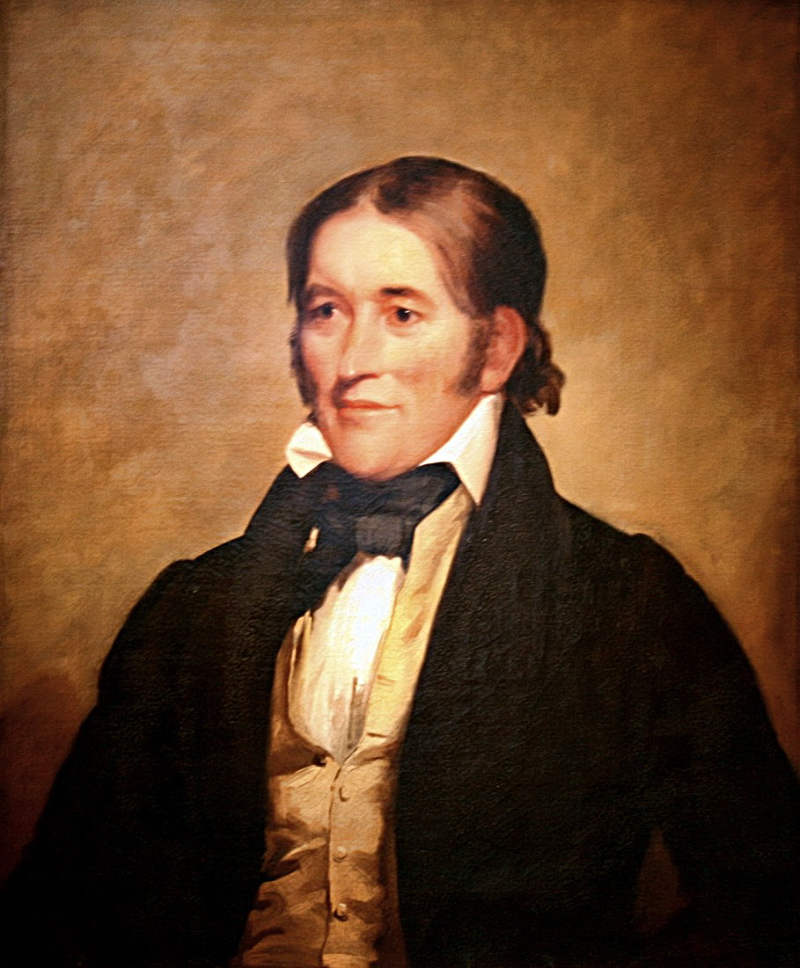
David ‘Davy’ Crockett (1786-1836) was an American folk hero, soldier, frontiersman and politician. Davy was the fifth of nine children born into the rough world of the American frontier. Many European immigrants changed or altered their surnames, and this is also true for the Crockett family. The name was originally Crocketagne, and the family were descendants of Huguenots that fled to England, Ireland and America.
In 1812, Crockett volunteered as part of a group of militia against the Creek Indians. His duties included reconnaissance and fighting both the Creek nation and the Red Coats (the British). Following the war with the Creek nation, Crokett became one of the principle commissioners of peace in Lawrence County, Tennessee, and was chosen by his contemporaries to be the Lieutenant Colonel of the 57th Regiment of Militia.
He ran for Congress in 1826, and was victorious. In 1827 he won the congressional seat in the election, but he was not reelected in the 1833 election due to his distaste of Andrew Jackson. Crockett had ambitions to liberate Texas from Mexico, but died at the hands of the Mexican army at the Alamo in 1836.
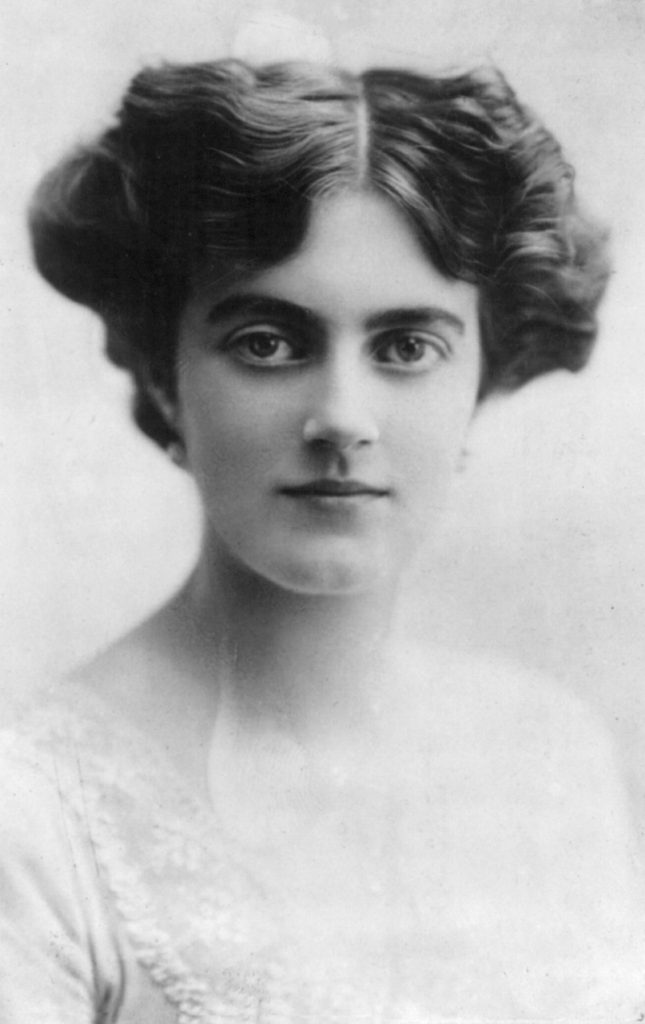
Clementine Crozier (1885 – 1977) was the wife of Winston Churchill. Appointed CBE in her own right for organising YMCA canteens for munitions workers during WWI; awarded Order of the Red Banner of Labour by Russia during WWII; appointed Dame Grand cross of the Order of the British Empire and created a life peer as Baroness Spencer-Churchill of Chartwell. Lived to age 92. Churchill summarised their married life as “the most successful marriage of the century” and wrote in his autobiography “then I married and lived happily ever afterwards.”
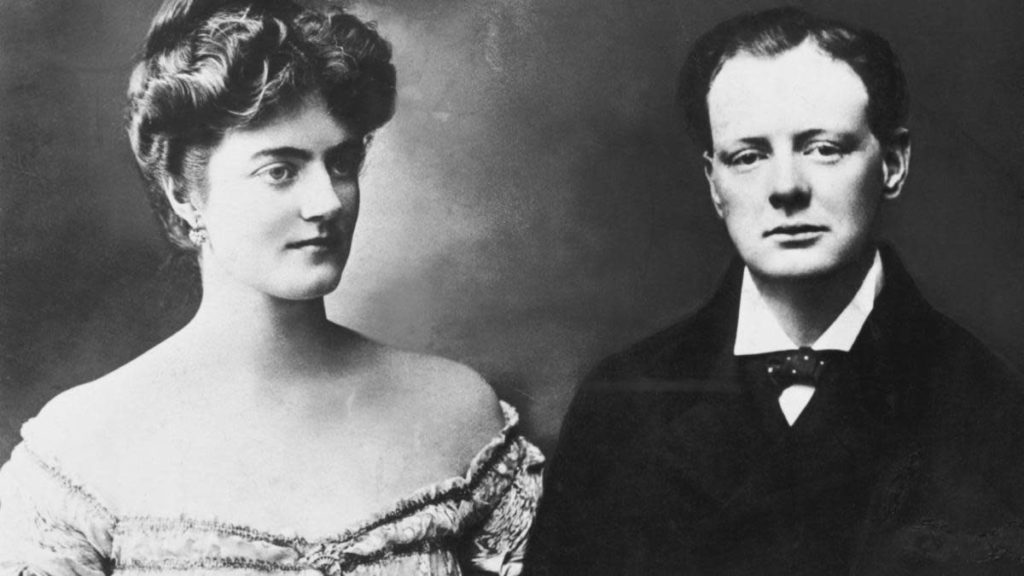
from 1308: France/Guernsey/Leith/Glasgow/London
Mentioned in the Duc d’Anjou’s battle dispatches in 1368 – 60 years after Richard Ossane (now Ozanne) featured in litigation in Guernsey’s Catel parish – militarist Gerault de la Condamine was successful in conflict in Rocamadour, Quercy.
The electoral ward known in the 21st century as La Condamine forms the frontage of Monaco harbour – largely a fairground/swimming pool now, through which F1’s grand-prix take place: at its north, La Condamine accommodates the church celebrating Ste Devote.
Andre de la Condamine was born in 1560, in Sevres, he commanded loyalist troops in 1621 in Nimes.
Andre’s son Jean de la Condamine was born in 1582; his grandson **Gabriel was born in 1606. Gabriel’s brother Antoine had a great-grandson, Charles Marie de la Condamine (d 1774), a mathematician and physician who travelled to England/London and who, despite near-calamitous setbacks, managed - almost single-handedly - to ‘measure the Earth’ by triangulation, in Ecuador.
Guernsey-born de la Condamines were descended from **Gabriel de la Condamine, via Georges and his elder son, “Guernsey” Andre (b 1665). [The family can now only be found in France.]
Andre became a Huguenot and turned his back on affluence: he fled with his fervently Huguenot wife Jeanne (b 1668), reaching Guernsey, penniless, in 1714.
“Guernsey” Andre and Jeanne had 7 children: of these, 3 of them made their way to London.
“Guernsey” Jean-Jacques de la Condamine (1711-1764): in 1760, “Guernsey” Andre’s son Jean-Jacques de la Condamine married Jersey-born Marie Neel. They had 2 children in Guernsey: Mary (b 1761, who married Guernseyman George Bell) and Jean “John” (b 1763); the latter became Guernsey Militia’s Colonel and King Comptroller.
In 1788 Jean “John” married Guernsey-born Elisabeth (nee de Coutart); they had 9 children. In 1790 “John” owned a business, Condamine & Co; but his tobacco and wine warehouse in St Peter Port’s Smith Street - where a tobacconist’s shop was in situ in the early 1990s - was destroyed by fire.
Their son Robert Coutart de la Condamine was born in 1800 (d1870) - photo herewith, spoiled by a child’s scrawl. He left Guernsey for Leith/Edinburgh, where he met and married Bethia McFarquhar, b1810.
They had 7 children (including a son ***Robert) and lived at 39 Drummond Place.
They owned or leased wine and tobacco warehouse(s) in Duke Street, Leith – and, possibly, in Shore Place (see photo).
These buildings are within 1 mile of where, in 2020, London-born Lucy de la Condamine Ozanne and her Glaswegian husband David Bell live, with their Edinburgh-born son: Freddie Stuart Ozanne Bell.
***Robert and Alice de la Condamine’s 4 Bedford/London-born children were a) Gertrude; b) Stella (paternal grandmother to 2 Londoners: James “Jack” de la Condamine Ozanne, b1951, and his sister Mary); Stella was born in London also, in 1871; she married Guernseyman Robert Ozanne: see photo of her, with violin); c) Katherine; d) Robert “Robin” de la Condamine, b 1877, a Wildean actor who adopted the stage-name Farquharson; his central London career was celebrated in autobiographies by Gielgud and Acton.
“Robin’s” nephew was Guernseyman/Londoner John Gabriel Ozanne, d1993: see Bletchley Park Trust’s 1941/2 photo. JGO married Londoner Sheila (nee Easson, a Glaswegian family). Their 2 children were: former Spitalfields freelance and part-time City worker James “Jack” Ozanne (born in London N8) and Mary, 1957-2016.
Gideon De Laune (1565-1658)
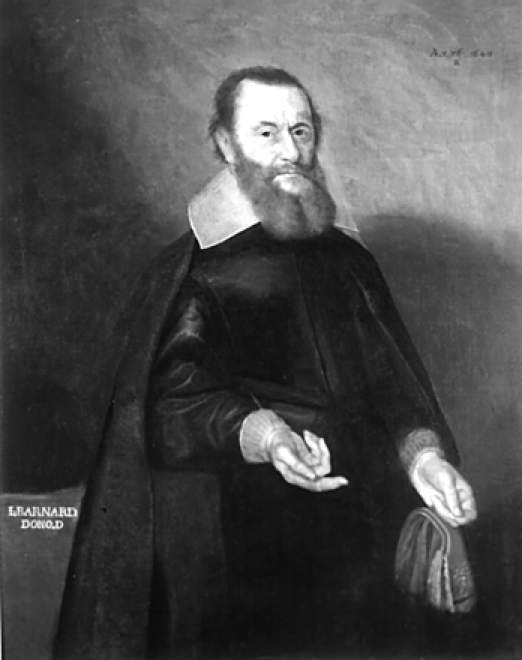
Born in Nimes, France in 1565, Gideon was the first son of William De Laune who was born in Normandy around 1530 and Katherine des Loges. William spent eight years studying medicine in Paris and Montpellier under the leading professors of physic at the time. Not only was Montpellier’s medical school regarded as one of Europe’s best, the city was a major centre of the French Reformed Church. After completing his studies there, William became an ordained minister of the Reformed Church in 1558
in addition to his practice of physic. His wife Katherine was the daughter of another Reformed Church minister in nearby Uzes. When his father-in-law died, William took on the financial burden of two families and was forced to move back to Normandy to concentrate on his physic work. Gideon was aged seven when, after the St Bartholomew’s Day massacre, the family fled France landing with many others at Rye, East Sussex.
Rye was the largest port in Sussex in the late 16th century and a major destination for those fleeing religious persecution. By 1582 more than half the population, some 1500 people, were Huguenots, but thousands more had passed through the town in the preceding decades, most moving on quickly to other places such as London, Canterbury, Southampton and Norwich. The numbers were so great at times they put such a strain on the town's resources that appeals for provisions were sent to the Queen.
By 1575 William had moved the family to London, to live in the precinct of St Anne’s Blackfriars, within the Liberty of Blackfriars, an area noted for its mixed population that included aristocratic Englishmen, highly skilled foreign artisans and a large sub-community of French protestants drawn to the area both by the freedoms it offered its inhabitants and its record of freedom from anti-alien violence. Blackfriars' Liberties, inherited from the old Dominican friary, included freedom from arrest by City of London officials within the precinct, exemption from City taxes, freedom to practice crafts and trades without Guild memberships, freedom from searches except by Liberty constables and freedom from serving in City offices. Whilst rejecting the City's interference or involvement in their affairs, the Liberty remained subject to the authority of the Crown, Parliament, and the Bishops of London. From its beginning the parish was a Puritan stronghold.
William leased a messuage (a combination of dwelling house, outbuildings and adjacent land) for his growing family. Gideon chose not to follow his father into medicine, but turned to apothecary instead although there is no record of him serving an apprenticeship to an English apothecary and it is thought that he learnt his skills from his father and other friends. As they became more assimilated into their life in England, the De Laune family attended and served both the French and English church.
About 1589, Gideon married Judith Chamberlen, cousin of Peter Chamberlen who invented obstetric forceps and daughter of Henry Chamberlen, gent. Gideon and Judith went on to have many children (17) including Abraham De Laune, Peter De Laune, Isaac de Laune, Gideon junior and William De Laune although many of his children were stillborn or died in infancy.
Gideon De Laune continued to prosper, becoming apothecary to Ann of Denmark, Queen of James I and practising from a shop at Blackfriars, making his name and fortune from the manufacture of De Laune’s Pills, a nostrum recommended for scurvy, dropsy, jaundice, venereal disease, worms, etc.
Gideon’s younger brother, Paul De Laune who was a native of London was educated at Emmanuel College, Cambridge and after further study became a member of the College of Physicians in 1615. He went on to become the physician-general to the fleet under Oliver Cromwell, sailing to Hispaniola and Jamaica. Sadly, nothing further is known of his history or fate and it is thought that he died at sea in December 1654.
Due to the success of his apothecary business Gideon was able to purchase several properties – an estate in Roxton, Bedfordshire, a manor house in Sharsted, Kent and a mansion in Blackfriars, plus extensive properties in Virginia and Bermuda.
In 1617, Gideon helped lead a breakaway group from the Grocers’ Company to raise the status of apothecaries in general practice and the King decided to incorporate the Society of Apothecaries and 114 apothecaries, including Gideon, were nominated as members. Gideon served as junior warden in 1624, senior warden in 1627 and was master in1637. He became a great benefactor to the public and was much involved in the foundation of the Apothecaries’ Hall in Blackfriars where a white marble statue of him can be seen to this day. There is also in the Hall a portrait of him in oil, supposed to have been painted by Cornelius Jansen. There has been a series of lectures since 1960 in the Faculty of Medicine and Pharmacy named the ‘Gideon De Laune Lecture’ in honour of the part that Gideon played in forming the independent City Livery Company.
Gideon lived piously to the age of 89 years and was buried under the stone in the porch of St Anne’s Church, Blackfriars, even leaving £1000 in his will to cover the cost. He bequeathed his estate with his only two surviving children Abraham and Ann and his grandchildren and Sharsted House passed down the family until in in 1966 the Court came into the possession of Canon Wade and his son Anthony Wade whose family included Virginia Wade, Wimbledon tennis champion in 1977. As of 2007, the house remains in the hands of the Wade and Shepley families who have undertaken extensive restoration of the house and gardens.
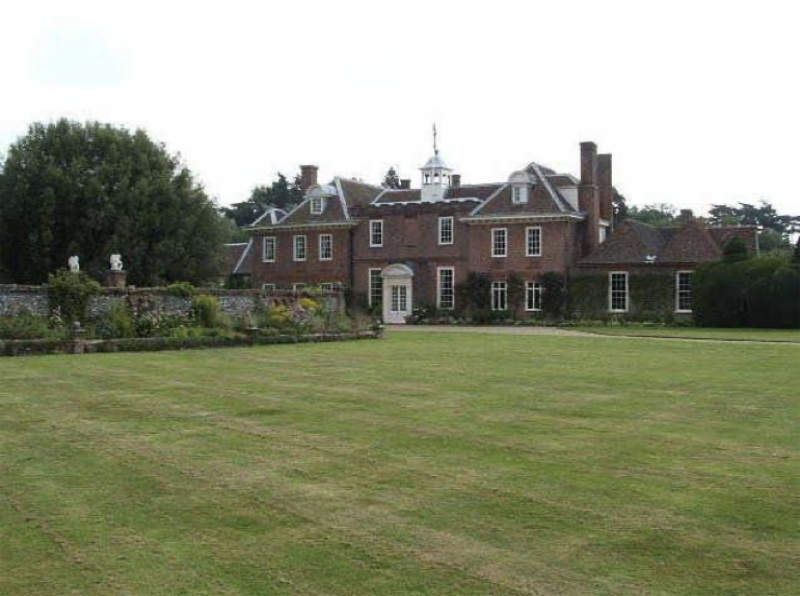
Like many other Huguenot refugees, Gideon De Laune left an indelible mark on the lives of his adopted English country.
References:
National Dict of Biography
Acknowledgements F.N.L. Poynter's Gideon DeLaune and his Family Circle has been the main point of reference for any study of Gideon DeLaune's life since it was published after he had delivered the Gideon DeLaune Lecture at Apothecaries' Hall on 23 April 1964.
Ancestry.com
Google searches

William Frend De Morgan (1839 – 1917)
William Frend De Morgan was an innovative ceramic designer and part of the Arts & Crafts Movement with William Morris. He was born in London to a celebrated mathematician Augustus de Morgan, and Sophia Frend, a campaigner for women’s rights and prison reform.
Having such forward thinking parents, De Morgan was encouraged in his pursuit of all things intellectual and artistic. In 1859 he attended The Royal Academy but soon realised that his interests lay in ceramic design, specifically tiles and stained glass. He began experimenting with new techniques in glazing and firing, as well as decorative skills and inventive use of colour.
In the 1870s he revived and refined the technique of lustreware using a metal deposit in the glaze to create a shimmering, luminous effect. However De Morgan was not a brilliant business man and that along with changing tastes in design meant that his ceramics business folded.
He re-invented himself as a novelist but it is his beautiful and unique ceramic ware for which he is greatly celebrated.
Source http://antique-marks.com/william-de-morgan.html
John Dollond was the son of a Huguenot refugee, who was a silk weaver. He was born in Spitalfields in November 1706 and died in November 1761 aged 55. Initially he followed his father’s trade, but also found time to study Latin, Greek, mathematics and physics, and later became an optician, joining his eldest son, Peter who had started in business as a maker of optical instruments.

John Dollond became known for his successful optics business and for patenting and selling achromatic lenses. His reputation grew rapidly and he became a Fellow of the Royal Society, publishing accounts of his various experiments. In 1761, he was appointed optician to the King, George III and the Duke of York and Albany.

After his death, his son Peter carried on the business and in 1781 he made bifocal spectacles. At the Great Exhibition in 1851 in London, the Dollonds were awarded a medal for the excellence of their optical instruments.
Today, Dollond & Aitchison is still a well-known name in the field of optics. However, the company was absorbed into Boots opticians in 2009 and most of its stores are now branded under the Boots Opticians name.
Peter Duthoit Senior 1693-1764 and Peter Duthoit Junior 1719-1777
3 Wilkes Street (formally Wood Street)
The Du Thoits were a silk weaving family originating from near Lille, some of whom in the middle 16th century settled in Canterbury and set up as weavers whilst others made their way to Brick Lane and Wood Street (now Wilkes St) in Spitalfields.
Peter Du Thoit senior was baptised in the hospital chapel of the French Protestant Church, Threadneedle Street in 1693. His parents were Jaques Duthoit and Elizabeth Boubay who had both been born in Canterbury, but later moved to London. Peter followed in the family business of silk weaving and became a member of the City Livery Weaver’s Company from 1716. He had a business in Brick Lane but later moved to No 3 Wood Street – a more highly-rated location.
In 1715 Peter senior married Jane Messman, the daughter of another wealthy weaver who had helped bring the manufacture of the fashionable ‘lustring’ and ‘alamode’ silk fabrics to England. ‘Lustring silk’, now probably better known as ‘shot silk’ was a glossy fabric and ‘alamode’ silk was a thin, looser-weave fabric and usually black. It was used mainly for mourning shawls and scarves, and for the linings of expensive garments. Neither of these ‘black silks’ had been made in England before as the method was a well-kept secret and up to this time the fabric had been imported from France.
Peter and Jane went on to have numerous children. Their eldest son (also called Peter) was born in 1719. After an education at the Merchant Taylors School Peter junior went into partnership with his father and is noted in 1763 as a ‘weaver of black silk’ so he obviously had continued this side of the business. Peter junior married Mary Hawkins and they had three daughters. He retired back to Canterbury and died in 1777 where he is buried at St Dunstan’s Church in Canterbury. The Duthoit family remained in the weaving business until the late 19th century.
Sources
- Britishistory.ac.uk/surveyLondon
- Ancestry.com
- Google searches
- Familysearch.org
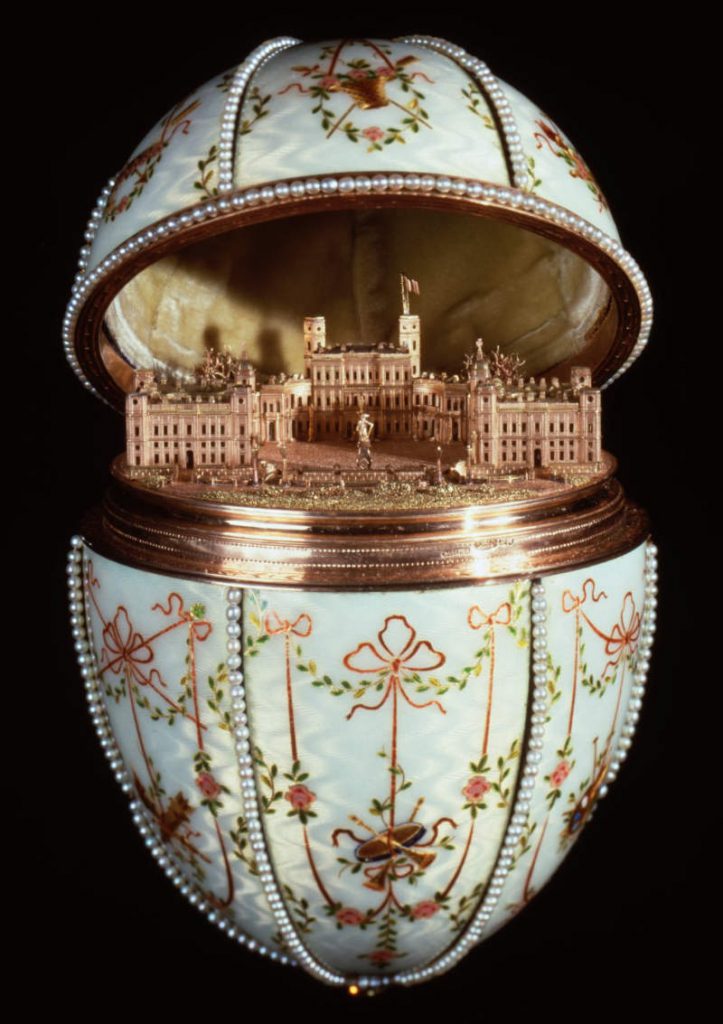
Gustav Fabergé founded the jewellery firm of Fabergé in 1842. The Fabergé family was originally from north eastern France and were Huguenots. The family first fled to eastern Germany, then settled in the Russian province of Lovinia, now part of Estonia.
Gustav’s father Peter enjoyed the patronage of Catherine the Great. Gustav was apprenticed to Andreas Spiegel and after his apprenticeship joined the firm Keibel, and is recorded as ‘Master Goldsmith’ in 1841.
He opened his first shop in St Petersburg. His son, Carl, took over the family business in 1870. The production of the famous imperial Fabergé eggs started with Carl, and they became a favourite of the Russian Tsars Alexander III and Nicholas II. The Fabergé company continued to prosper both locally and internationally throughout the nineteenth and twentieth centuries.
Source: http://stpetersburgcollection.com/history-of-faberge
Paul Fourdrinier
Paul Fourdrinier was born in Amsterdam, the son of French Huguenots, who later moved to England. Paul became a well known copper engraver and printmaker but he has largely been forgotten by history.
Born at the end of 1698 in Amsterdam, he was the son of French Protestant parents who had been deported to England and later moved to the Netherlands. It is believed that the teenage Paul was apprenticed for six years to Bernard Picart, one of the greatest engravers of his time, who as a convert to Protestantism had fled Huguenot persecution and moved to Amsterdam in 1711.
In 1720 the Fourdrinier family returned to London where Paul was able to find employment with Jacob Tonson, a prominent publisher. His first job was to produce around a hundred engravings for John Dryden’s translation of “The Works of Virgil”. His work was well received and he went on to work on engravings for Milton’s “Paradise Lost”. He was also commissioned to provide illustrations on books about Palladian Neoclassical architecture published by the 3rd Earl of Burlington.
Paul married Susanna Grolleau, herself the daughter of a Huguenot cloth dealer, and together they had a large family. In 1731, now well established in London, he set up a studio at the corner of Craig’s Court and Whitehall, producing engravings ranging from portraits to astronomical maps for leading figures in London society. He was frequently employed on architectural works as his engraving style was very accurate and detailed. His career involved him in many well known projects such as the first Westminster Bridge and the Georgian City of Bath.
He died in 1758 at the young age of 60 and is buried in the Grolleau family grave in the Huguenot Cemetery in Wandsworth, London.
Sources include: paulfoudrinier.com & British Library website
